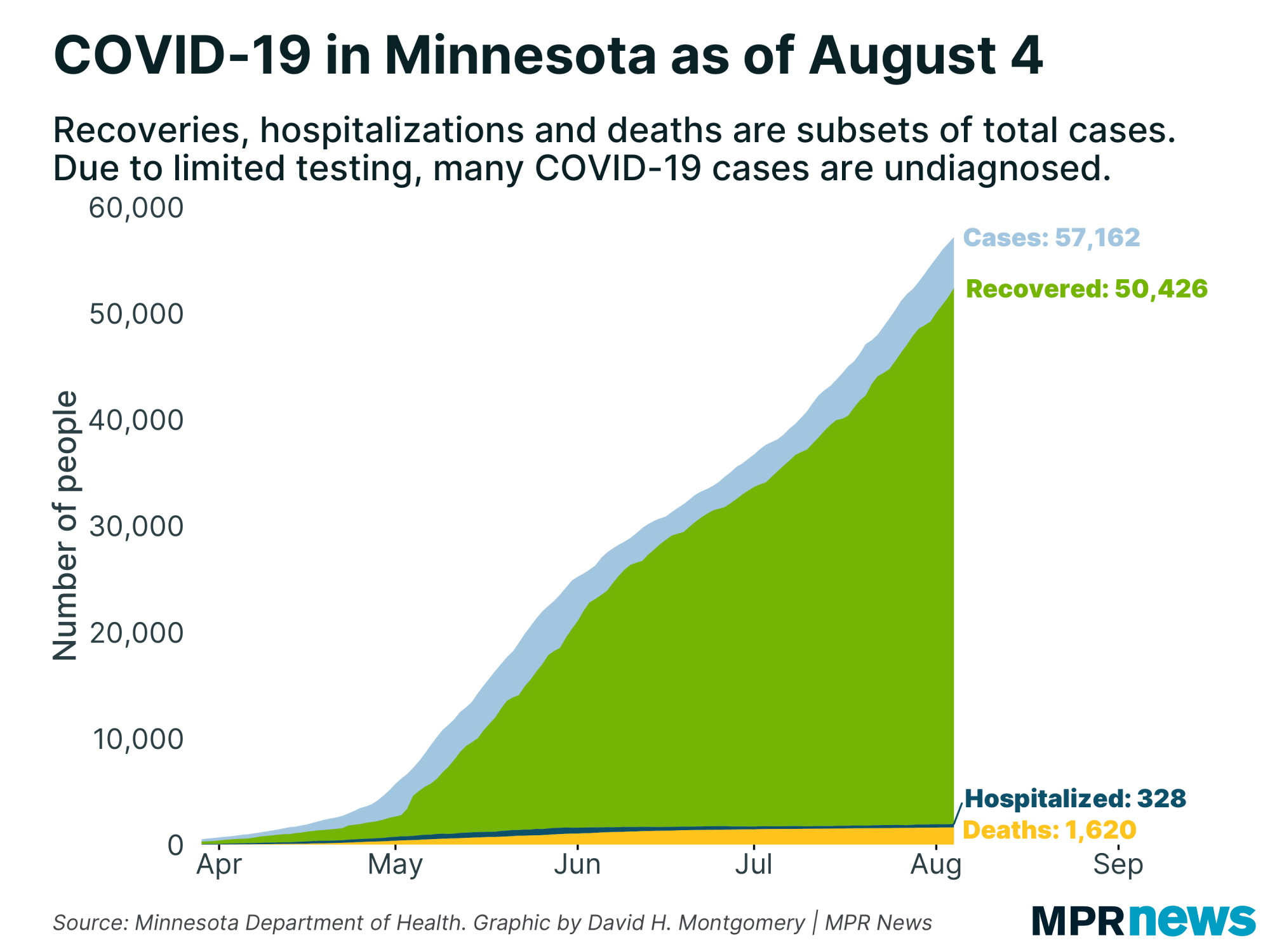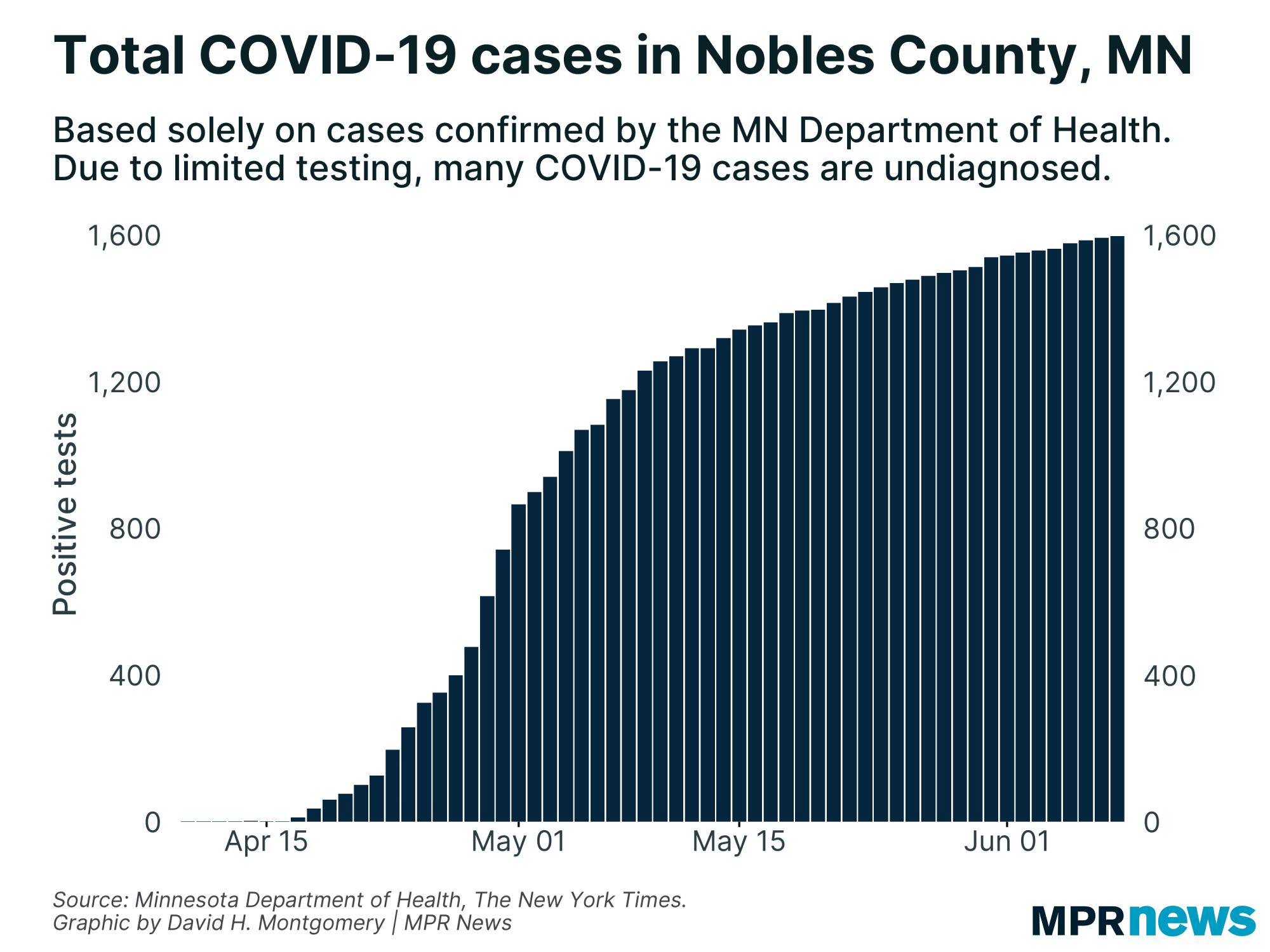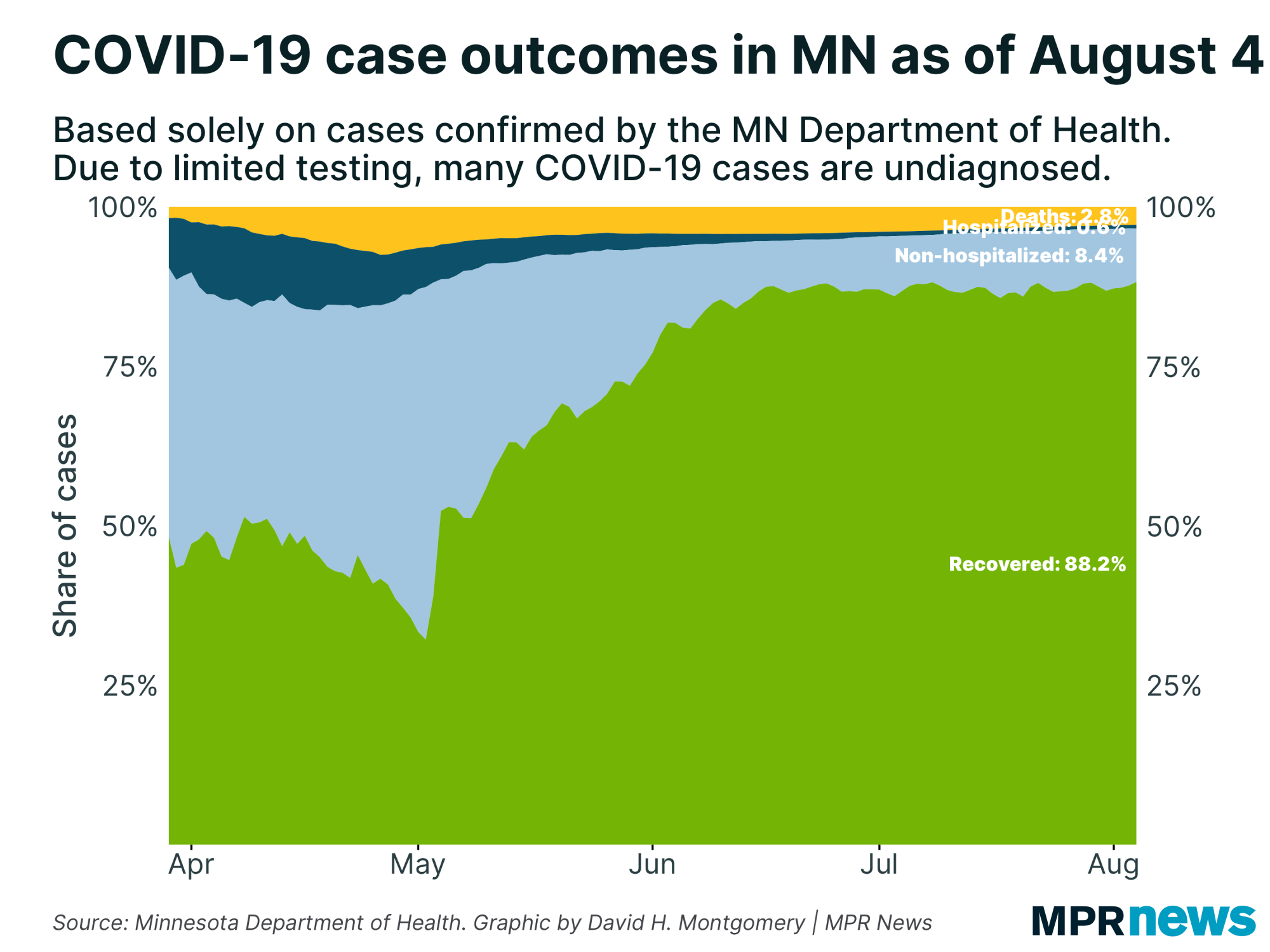April 23 update on COVID-19 in MN: 200 dead; more firms to reopen; State Fair doubts

Go Deeper.
Create an account or log in to save stories.
Like this?
Thanks for liking this story! We have added it to a list of your favorite stories.
Updated 7:26 p.m. | Posted: 5:30 a.m.
As many as 100,000 manufacturing, industrial and office workers could be back to work as soon as Monday, but public school buildings will stay closed, and there is serious doubt about this year’s Minnesota State Fair.
Those were the key takeaways Thursday as Gov. Tim Walz updated reporters on the ongoing fight to manage the spread of COVID-19 while trying to restart sectors of Minnesota’s shuttered economy.
Peppering his remarks with optimism and grim reality, he applauded Minnesotans for the sacrifices made the past month, saying they’d helped check the disease’s spread and keep the health care system from being overwhelmed.
But he also warned the state to expect a coming surge in COVID-19 cases as the amount of testing rapidly increases — and he braced Minnesotans to prepare for many more deaths, and a possible fall resurgence.
Turn Up Your Support
MPR News helps you turn down the noise and build shared understanding. Turn up your support for this public resource and keep trusted journalism accessible to all.
"I want to remind Minnesotans: The hardest days are ahead,” he said. “The climb is still up. We're not near that peak yet.”
He also signaled that Minnesota was still not close to allowing the return of people in packed public spaces, including crowded bars, restaurants or major sporting events.
That may also include the Minnesota State Fair.
Walz did not sound optimistic when a reporter asked about the prospects for the fair — an event that puts hundreds of thousands of Minnesotans shoulder to shoulder for days — opening in late August.
“I wouldn’t want to make a definitive call. But I also don’t want to give any false hope on this. I think it would be very difficult to see a State Fair operating,” he said. “I don’t know how you social distance in there. I mean one of the greatest parts of the State Fair is it’s super crowded.”
The last time the State Fair wasn’t held? It was during the polio epidemic in 1946.
COVID-19 deaths
Walz’s comments came hours after Minnesota hit another grim COVID-19 milestone.
State health officials reported 200 people have now died from the disease, 21 more than Wednesday, the largest single one-day toll since the pandemic began and the third consecutive day of double-digit deaths.

Total current hospitalizations rose to 268, up 28 from the prior day, while patients in intensive care units dipped to 104.
Since the outbreak began 2,942 people have tested positive for the disease, up 221 from Wednesday. About half have recovered to the point they no longer need isolation.
New guidance for business
Walz unveiled a set of protocols Thursday to permit manufacturers, and other businesses that aren’t customer-facing to restart and let employees return to work as soon as Monday, providing there are safe-distance, sanitizing and other protocols in place and executives commit to enforce them.
That was great news to Bob Riegelman, president of Riedell Skates in Red Wing, Minn.
"We've done all that has been asked of us by our governor,” he told reporters. “We're extremely excited, almost to tears," that reopening is at hand.
Officials will continue using data and science in the process to restart parts of the economy while protecting workers, said Steve Grove, the state’s commissioner of employment and economic development.
“It's going to take some time for life to feel anything like it used to feel,” he said, “but we really feel with a plan in place, government, business communities working together, we can get this right for all Minnesotans."
While the changes will put some 100,000 Minnesota employees back on the job at thousands of business sites across the state, it will not help retail firms that depend on crowds and customers.
Many restaurant owners are struggling to stay afloat as they await word from the state about when and how they might reopen. The trade group Hospitality Minnesota has given Walz a list of safety protocols for reopening.
While some are doing curbside and takeout orders, others were unable to adapt or couldn’t bring in enough money to sustain the operation, said Liz Rammer, president of Hospitality Minnesota. “Some have closed permanently, and some have closed temporarily.”
Schools to stay virtual
Walz confirmed that school buildings will stay closed through the rest of this school year, adding, “there’s no joy in this."
Asked if parents should expect distance learning to continue into the next school year? Walz, a former high school teacher and coach, conceded: "The answer is I don't know yet on fall." He said it was under study.
"I worry deeply on this,” Walz said of students potentially falling behind because of the strain of distance learning and the lack of face-to-face contact with teachers and peers. “I mean these are decisions that will reverberate through a lifetime potentially. We know what educational research shows if you fall a grade or two behind.”
Minnesota students began their remote instruction in late March. At least 39 other states have ordered or recommended that school buildings remain closed for the rest of the academic year, according to Education Week.
Kevin Burns, a spokesperson for St. Paul Public Schools, said the state’s second largest district is starting to plan for a scenario in which school buildings would need to stay shuttered even longer, affecting the district’s summer learning programs and beyond.
“We also are wise to the fact that we don’t know so much about the spread of the virus and its impact that we have been working rather diligently to explore options for continuing distance learning into the new school year this coming fall,” he said.
Many districts have been improving their remote teaching systems during the statewide shutdown order, and given the continued spread of COVID-19, it would be hard to reopen schools without exposing more people, said Gary Amoroso, head of the Minnesota Association of School Administrators.
He said he supported Walz’s decision to keep buildings closed and that districts are looking at ways to hold graduation ceremonies for high school seniors that still observe social distancing protocols.
Separately on Thursday, the Minnesota State High School League canceled all spring activities and athletics for the rest of the school year.
SW Minnesota outbreak
Nobles County in southwestern Minnesota continues to be a hot spot for COVID-19. It holds the largest cluster outside the Twin Cities area and Rochester and the highest rate of COVID-19 cases of any county by far relative to its population.
The JBS pork processing plant in Worthington is at the center of the Nobles County outbreak. On Monday morning, company executives announced they were indefinitely shutting the plant, which employs some 2,000 workers, to try and get control of the situation.
On Thursday, the Health Department said Nobles County now has 196 positive tests for the disease, up, 70 from Wednesday. It had just two cases last week.

COVID-19 ‘moonshot’
The latest counts of cases and deaths come a day after the governor unveiled a massive COVID-19 testing plan Wednesday in which the Mayo Clinic and the University of Minnesota would play key roles in testing 20,000 people daily.
For weeks, Walz has said that drastically increased testing would be critical to restarting parts of the economy. Two kinds of tests, ones that diagnose COVID-19 and others that see if a person has been exposed to the virus, are included in the plan, along with increased tracing.
While the plan would make Minnesota No. 1 in the nation for testing, Walz said testing alone would not end the crisis.
Testing in Minnesota and elsewhere has been hampered by supply chain issues and materials shortages. Minnesota has tested about 1,200 or so people daily as of late. That’s only about one-quarter of the testing Walz says is needed.

Health Commissioner Jan Malcolm said the U-Mayo plan would be ramped up quickly so that every Minnesotan with COVID-19 symptoms will be tested as soon as possible, with a focus first on vulnerable populations, including long-term care residents and the workers who care for them.
Communities of color, especially Native people, would also be a priority, along with “critical infrastructure” workers such as day care operators.
The testing push will be funded in part by $36 million from the COVID-19 Minnesota Fund. Money will also go to build a central laboratory driven by the U and Mayo to meet the expanded testing.
On Thursday, Malcolm told reporters that the goal is to test all Minnesotans with COVID-19 symptoms within the next four weeks.
Developments from around the state
AG Ellison: Online St. Paul retailer was ‘price gouging’
Minnesota Attorney General Keith Ellison said Thursday his office stopped a St. Paul retailer from engaging in COVID-19-related price gouging. Ellison said Red Star Trader offered to sell food, health care and cleaning goods, as well as other products at excessive prices, as the coronavirus crisis started to unfold last month.
For instance, the company offered 50-pound bags of rice for $120, Ellison said.
"They’re what I would call pandemic profiteers. And what they did was wrong. It was not only morally repugnant in my view, but illegal according to the executive order,” Ellison said.
Gov. Walz’ executive order issued in March prohibits excessively high prices for goods essential for health and safety.
The company agreed to stop selling goods at inflated prices. Red Star Trader faces a $20,000 fine if it violates terms of a settlement with the attorney general.
The attorney general’s office has received about 1,500 price gouging complaints. Many cases have been resolved with calls or letters of reprimand. Three have gone to court.
Red Star Trader declined to comment.
— Martin Moylan | MPR News
MN High School League cancels spring sports
In the wake of Thursday’s announcement that Minnesota schools will remain closed through the end of the academic year, the State High School League says all spring sports and other school activities have been officially canceled. That includes tryouts, practices and competitions.
The league board of directors is set to meet Friday to discuss the cancellation, including how it'll affect rules and policies on participation.
— MPR News staff
Most COVID-19 deaths in Minneapolis tied to group care facilities
Minneapolis city officials say more than 90 percent of city residents who've died from COVID-19 were living in senior care or congregate living facilities.
Mayor Jacob Frey signed a new emergency order on Thursday aimed at stemming the spread of the virus among those residents. Frey's order suspends communal dining. Facilities also will be required to isolate infected residents on separate floors. And all patients or residents will be expected to keep their faces covered while outside their rooms.
Frey said the new requirements also should help protect the people who work at the facilities.
“We know that they are putting themselves at risk in many cases, one, just to make a living and two, we got to recognize that they're helping the whole population right now,” said Frey. “So, they deserve a lot of credit in this. But more importantly, they deserve our support."
The order, which covers more than 200 facilities in the city, goes into effect next week.
— Brandt Williams | MPR News
Vice President Pence to visit Mayo next week
Vice President Mike Pence is coming to Rochester, Minn., Tuesday.
He'll tour Mayo Clinic facilities supporting COVID-19 research and treatment, and meet with Mayo staff.
Pence, who heads the federal government’s effort to respond to the COVID-19 outbreak, was also in Minnesota last month when he toured 3M. He praised the company's efforts to meet the demand for medical masks.
— MPR News staff
COVID-19 canceling summer events across Minnesota
Even as state officials have been raising expectations for coronavirus testing, summer events and destinations continue to be canceled across Minnesota.
Ramsey County has closed its Water Works water park in Maplewood. Stillwater city officials have called off the annual Lumberjack Days and Fourth of July Fireworks display.
Mayor Ted Kozlowski said funding for those events depends on contributions from the hospitality industry, much of which is shut down. He also said the huge crowds that weekend Fourth of July fireworks draw may pose a health hazard.
“I don’t know if coming out a pandemic that the majority of our community would be appreciative of 40,000 visitors in one day in our town,” Kozlowski said.
St. Paul’s June Grand Old Day has also been canceled, as have Steamboat Days in Winona and a variety of other summer festivals.
— Tim Nelson | MPR News
Top headlines
Emergency vehicles honor health care workers and fallen paramedic: Police cars, motorcycles, firetrucks and ambulances flooded downtown Minneapolis Thursday afternoon to honor health care workers and Hennepin County EMS paramedic Karl Meek, who died Tuesday. The procession shut down what little traffic there was in downtown Minneapolis, as emergency vehicles circled Hennepin Healthcare with lights and sirens blaring. Hospital workers in scrubs and masks waved to the parade from the skyway.
Even knowing the risks, some counties want tourists back: The governor’s response to COVID-19 has brought the tourism industry close to disaster, some officials say. Three Minnesota counties passed resolutions Tuesday, asking Gov. Tim Walz to lift his state-wide stay-at-home order and allow businesses to reopen, despite growing numbers of COVID-19 infections.
Community alliance reassembles to battle COVID-19 fallout in north Minneapolis: The pandemic poses different challenges than the devastating tornado that inspired the formation of the Northside Community Response Team in 2011. African American community leaders say the crisis has forced them to figure out new ways of keeping their community connected, safe and healthy.
Patients weigh seeking care for conditions other than COVID-19: Thousands of Minnesotans have delayed surgeries and procedures because of COVID-19’s toll on the hospital system. But health officials are reminding Minnesotans they shouldn’t feel afraid to seek medical care.
COVID-19 in Minnesota
Health officials for weeks have been increasingly raising the alarm over the spread of the novel coronavirus in the United States. The disease is transmitted through respiratory droplets, coughs and sneezes, similar to the way the flu can spread.
Government and medical leaders are urging people to wash their hands frequently and well, refrain from touching their faces, cover their coughs, disinfect surfaces and avoid large crowds, all in an effort to curb the virus’ rapid spread.
The state of Minnesota has temporarily closed schools, while administrators work to determine next steps, and is requiring a temporary closure of all in-person dining at restaurants, bars and coffee shops, as well as theaters, gyms, yoga studios and other spaces in which people congregate in close proximity.


